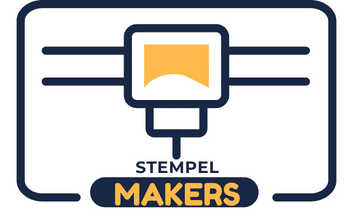When dealing with the aftermath of a traumatic brain injury (TBI), the path to recovery can be rocky and fraught with uncertainty. Cognitive Rehabilitation Therapy (CRT), a form of treatment designed to improve cognitive functions such as memory and attention, has emerged as a beacon of hope for many TBI patients. However, the key to successful therapy isn’t just about offering CRT, but optimizing it to meet the individual needs of each patient. This article will delve into the intricacies of CRT and discuss various strategies to enhance its effectiveness for TBI patients.
Understanding the Impact of TBI on Cognitive Functions
A traumatic brain injury can have a devastating impact on cognitive functions, transforming an individual’s life in the blink of an eye. The severity and location of the damage can affect the cognitive abilities, leading to impairments in memory, attention, and other essential skills.
Dans le meme genre : What Are the Most Effective Sleep Hygiene Practices for Shift Workers?
Numerous studies, many of which can be found in scholarly databases like PubMed and Google Scholar, have explored the complexities of cognitive impairments following a traumatic brain injury. These studies have demonstrated that TBIs can lead to a broad range of cognitive deficits, from mild memory lapses to severe attention disorders.
Understanding these cognitive impairments is the first step towards effective cognitive rehabilitation. By appreciating the challenges faced by TBI patients, we can better tailor therapies to provide the support these individuals need to regain their cognitive capacities.
A découvrir également : Are Virtual Reality Fitness Programs Effective for Weight Loss?
The Role of Cognitive Rehabilitation Therapy (CRT)
Cognitive Rehabilitation Therapy is a type of therapy designed to help people with brain injury improve their cognitive functions. The goal of CRT is to enhance the patient’s ability to process and interpret information, thereby improving their memory, attention, and other cognitive skills.
CRT is an evidence-based approach, meaning it’s grounded in scientific research that validates its efficacy. In a robust study published on PubMed, researchers found that patients who underwent CRT showed significant improvements in cognitive functions compared to those who did not receive the therapy.
However, it’s not enough to simply administer CRT. For the therapy to be truly effective, it needs to be personalized to the patient’s unique needs and circumstances. This approach is known as individualized CRT and is considered the gold standard in cognitive rehabilitation.
Optimizing CRT: Individualized Approach
The individualized approach to CRT emphasizes the importance of tailoring therapy to meet the specific needs of each patient. This means taking into consideration the patient’s cognitive deficits, their personal goals, and their broader life context.
To optimize CRT, therapists should focus on tasks that are relevant to the patient’s daily life. For example, if a patient struggles with memory, therapy might involve memory training exercises designed to improve recall. These could include recalling grocery list items or remembering appointments.
This approach not only aids cognitive skills but also boosts the patient’s confidence. When patients see tangible improvements in their day-to-day life, they’re more likely to stay motivated and engaged in therapy.
Incorporating Technology into CRT
In the digital age, technology has become an essential tool in cognitive rehabilitation. Various digital platforms and tools can be utilized to support and enhance CRT, providing more options for individualized therapy.
Google, for instance, offers a range of resources that can be used in cognitive rehabilitation. These include digital calendars and reminders, which can help patients with memory deficits keep track of important dates and tasks. Google’s tools are easily accessible and user-friendly, making them an excellent addition to a CRT program.
In addition, numerous cognitive training apps are available that offer a variety of exercises designed to improve cognitive skills. These apps can be tailored to the patient’s specific needs and can be used at home, providing a convenient way for patients to continue their therapy outside the clinical setting.
While technology is not a replacement for traditional CRT, it can serve as a valuable supplement, providing additional resources for patients and therapists alike. By incorporating digital tools into CRT, we can offer a more flexible and personalized approach to cognitive rehabilitation.
To summarize, optimizing cognitive rehabilitation after a traumatic brain injury involves a multi-faceted approach. By understanding the impact of TBI on cognitive functions, utilizing evidence-based therapy like CRT, adopting an individualized approach, and incorporating technology, we can effectively support TBI patients on their journey towards cognitive recovery.
Enhancing CRT with Problem Solving and Executive Function Training
An essential aspect of CRT that must be considered in optimizing treatment is the integration of problem-solving and executive function training. These two cognitive processes are often affected after a traumatic brain injury. Google Scholar and PubMed offer a wealth of research detailing the impact of TBI on these areas and the benefits of targeted training.
Problem-solving skills are critical for everyday tasks, from making decisions about what to cook for dinner to managing finances. A TBI can significantly impair these skills, making seemingly simple tasks challenging. Consequently, integrating problem-solving exercises into CRT can help TBI patients regain these abilities and improve their independence.
Executive functions, which encompass abilities like planning, organizing, and impulse control, are also often affected by a brain injury. Training these functions can be particularly beneficial for moderate to severe TBI patients who may struggle with tasks requiring these cognitive abilities.
Incorporating these targeted training exercises into CRT is not just about rehabilitation but also about empowering TBI patients. By focusing on real-life scenarios, patients can see the direct impact of their progress on their day-to-day life, providing a powerful motivator for their continued engagement in therapy.
The Promise of Virtual Reality in Cognitive Rehabilitation
As technology continues to progress, virtual reality (VR) has emerged as a promising tool for cognitive rehabilitation. VR allows for immersive, realistic environments where TBI patients can safely practice skills and tasks that they may find challenging in the real world.
Recent studies available on PubMed and Google Scholar highlight the potential benefits of VR in cognitive rehabilitation following a traumatic brain injury. The interactive nature of VR provides an engaging platform for cognitive training, making therapy sessions more enjoyable and less tedious for patients.
VR can also offer a highly customizable experience, allowing therapists to adjust the difficulty level and type of tasks to suit the patient’s individual needs. This personalized approach aligns with the broader focus on individualized CRT, making VR a fitting addition to cognitive rehab programs.
Moreover, VR can also facilitate long-term therapy. As patients can use VR at home, they are more likely to continue their exercises outside of the clinical setting, promoting sustained cognitive improvement.
Conclusion: The Future of Cognitive Rehabilitation
Looking ahead, the future of cognitive rehabilitation after traumatic brain injury is promising. Our understanding of TBI and its impact on cognitive functions continues to evolve, leading to more effective and personalized therapy strategies.
The role of CRT as an evidence-based approach is undeniable, with research on platforms like PubMed and Google Scholar consistently affirming its effectiveness. By adopting an individualized approach, we can tailor CRT to address the unique cognitive impairments and goals of each TBI patient.
Incorporating technology, whether it’s digital tools from Google, cognitive training apps, or virtual reality, adds another layer of personalization and accessibility to therapy. These tools provide practical ways for patients to continue their therapy at home and see the impact of their progress in their daily life.
Ultimately, optimizing cognitive rehabilitation is about empowering TBI patients. Whether it’s through improving problem-solving skills, enhancing executive functions, or making therapy more engaging with VR, the goal remains the same: to help individuals regain their cognitive abilities and improve their quality of life after a traumatic brain injury.






